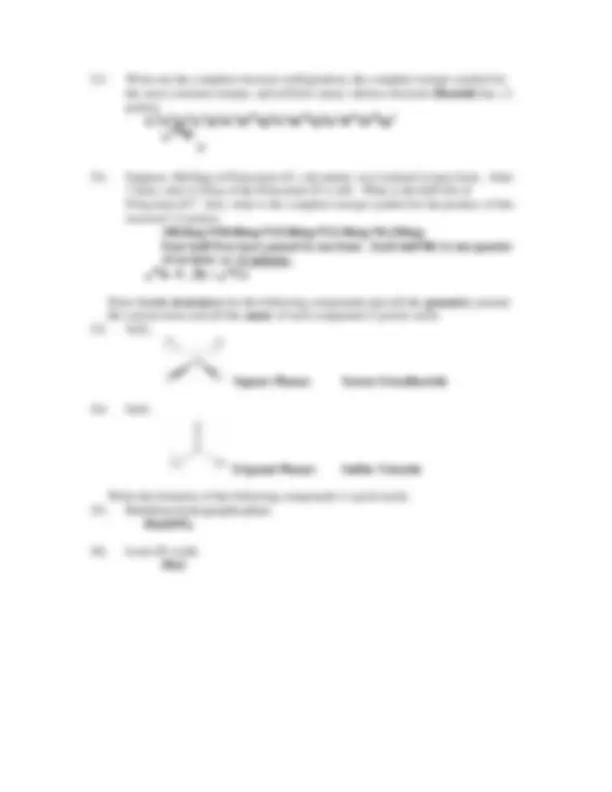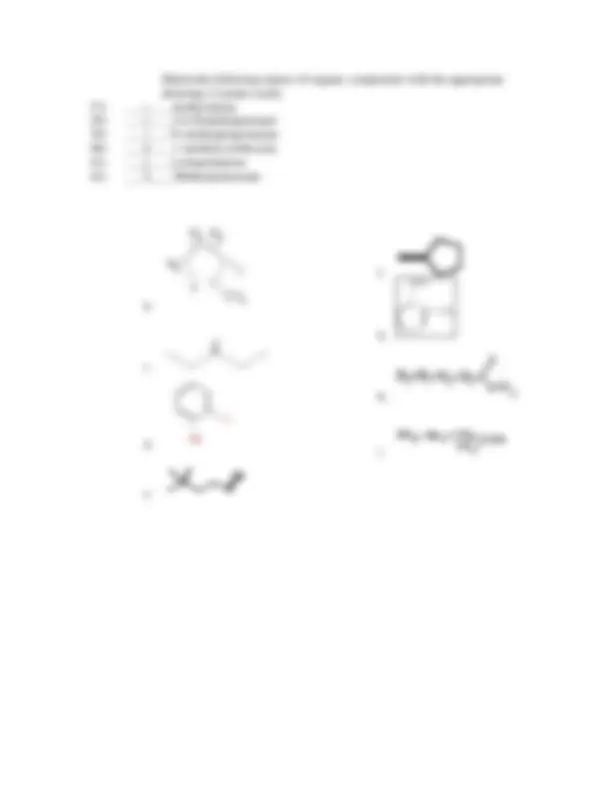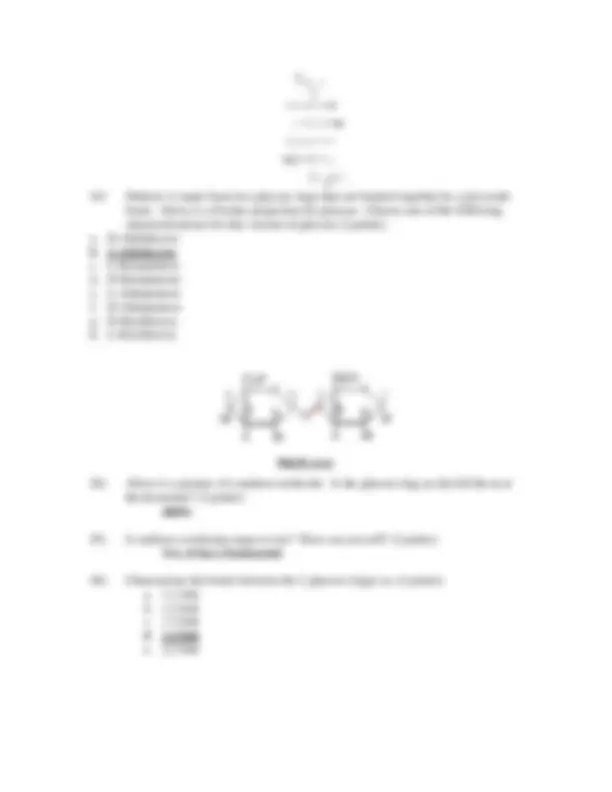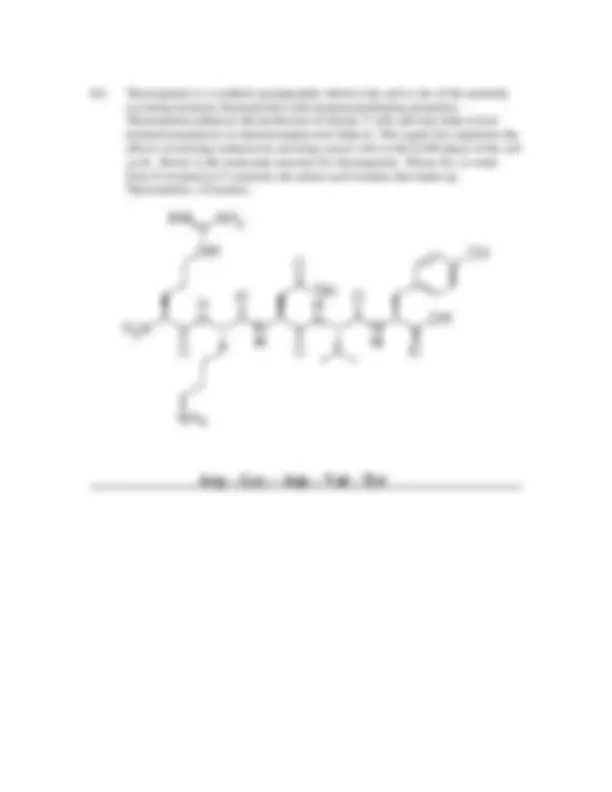






Study with the several resources on Docsity

Earn points by helping other students or get them with a premium plan


Prepare for your exams
Study with the several resources on Docsity

Earn points to download
Earn points by helping other students or get them with a premium plan
Community
Ask the community for help and clear up your study doubts
Discover the best universities in your country according to Docsity users
Free resources
Download our free guides on studying techniques, anxiety management strategies, and thesis advice from Docsity tutors
Material Type: Exam; Professor: Fuhrer; Class: Chemistry of Life; Subject: Chemistry; University: Radford University; Term: Fall 2008;
Typology: Exams
1 / 8

This page cannot be seen from the preview
Don't miss anything!





Name: _________________________
For numbers 1-15, find and write the letter from the terms below that match each definition. (1 points each)
a. Acyl b. Isotopes c. Acetal d. Isomers e. Ionization Energy f. Acetyl g. Hemiacetal h. Tertiary Protein Structure i. Anion j. Secondary Protein Structure k. Mass Number l. Facilitated Diffusion m. Simple Diffusion
n. Enantiomers o. Diastereomers p. Activation Energy q. Alkene r. Cation s. Alkane t. Peptide Bond u. Alkyne v. Atomic Number w. Chiral x. Polar Covalent Bond y. Ionic Bond
For numbers 16-30, find and write the letter from the terms below that match each definition. (1 points each)
a. Globular Protein b. Native Protein c. Heterogeneous Mixture d. Buffer e. Lyases f. Bronstead-Lowry Base g. Arrhenius Base h. Homogeneous Mixture i. Fibrous Protein j. Ligases k. Solvation l. Enantiomers
m. Simple Protein n. Conjugate Base o. Eicosanoid p. Colligative Property q. Leukotriene r. anomers s. pH t. Oil u. Fat v. Soap w. Solution x. Colloid
Match the following names of organic compounds with the appropriate drawings (2 points each):
b.
c.
d.
e.
f.
g.
h.
i.
Maltose is made from two glucose rings that are bonded together by a glycoside bond. Above is a Fischer projection for glucose. Choose one of the following characterizations for this version of glucose (2 points). a. D-Aldohexose b. L-Aldohexose c. L-Ketopentose d. D-Ketopentose e. L-Aldopentose f. D-Aldopentose g. D-Ketohexose h. L-Ketohexose
Above is a picture of a maltose molecule. Is the glucose ring on the left the α or the β anomer? (2 points) alpha
Is maltose a reducing sugar or not? How can you tell? (2 points) Yes, it has a hemiacetal
Characterize the bonds between the 2 glucose ringse as: (2 points) a. 1,1 link b. 1,2 link c. 1.3 link d. 1,4 link e. 2,2 link
Use the picture above to answer questions 53-55 dealing with this triacylglycerol ( points each)
Which acyl group(s) ( 1 , 2 , or 3 ) is (are) saturated? 2
Which is (are) mono-unsaturated? 1
Are the unsaturated fats on this triacylglycerol cis or trans fats? Cis
For each of the following compounds, label them as Acid, Base, Both, or Neither (1 point each)
NH 4 I Acid
NaBr Neither
CH 3 CH 2 COOH Acid
Na 3 PO 4 Base
KMnO 4 Base
H 2 O Both
CaO Base
NO 2 Acid